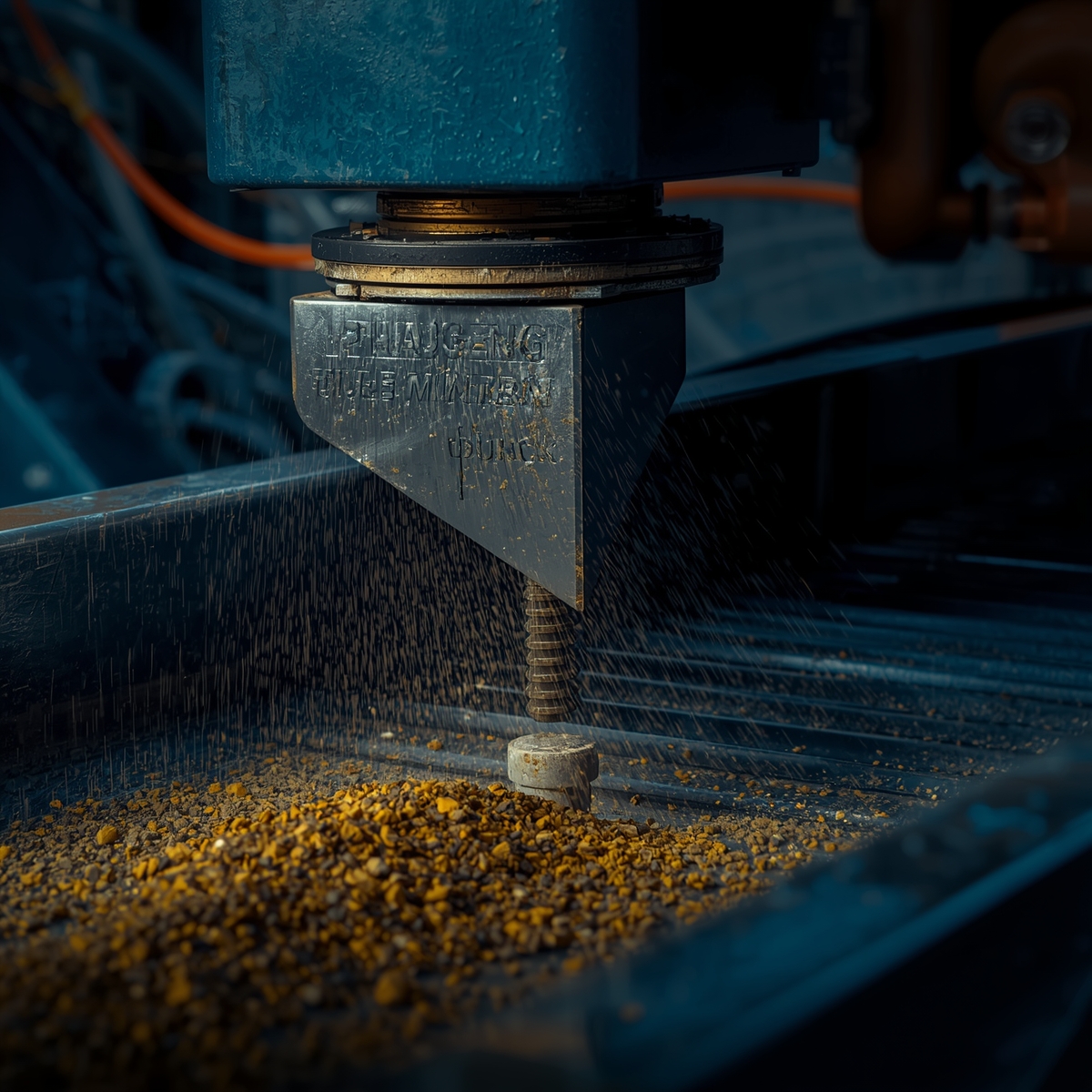How Sampling Accuracy Affects Mineral Trade Value
8 min

Accurate sampling is the contractual backbone of every mineral trade. A variance of just 0.3% in total moisture or 0.5% in Fe grade can swing the invoice on a cape-size cargo by six figures. This article expands on how Mineral Quality Services Pvt. Ltd. engineers sampling accuracy to protect both buyers and sellers across iron ore, coal, and industrial mineral supply chains.
Table of Contents
- Commercial Context and Price Exposure
- Regulatory & Standard Frameworks
- Designing Mechanical & Manual Sampling Systems
- Chain-of-Custody, Traceability, and Data Integrity
- Measurement Uncertainty and Risk Allocation
- Moisture, Grade, and Penalty Calculations
- Case Study: Iron Ore Loading Port
- Operational Checklists and SOP Control
- Dispute Prevention and Resolution Workflow
- Conclusion
Commercial Context and Price Exposure
Iron ore, coal, and manganese transactions frequently apply index-linked formulas with moisture deductions, ash penalties, or silica caps. A 180,000 MT shipment priced at 110 USD/MT faces a 198,000 USD exposure when total moisture deviates by only 0.1 %. Sampling bias therefore has immediate financial implications. Commodity desks require proof that sampling increments were taken at random, handled per SOP, and recorded in tamper-evident logbooks.
Bias Pathways
- Increment selection error: Skipping increments when conveyors are congested or weather deteriorates.
- Sample reduction loss: Improper riffle splitting or uncalibrated crushers causing segregation.
- Moisture drift: Delayed sealing or use of non-air-tight containers.
- Analytical mismatch: Lab methods not harmonized with contractual requirements (ASTM vs ISO).
Regulatory & Standard Frameworks
Sampling confidence relies on compliance with ISO 3082 (iron ores), ISO 13909 (coal), BIS 436 (manganese), and ASTM E877 for mechanical sampling. Mineral Quality Services Pvt. Ltd. benchmarks every plan against the Gy's sampling theory, ensuring increment mass, cutter velocity, and lot definition are statistically robust.
Key Clauses Referenced in Contracts
- ISO 3082 section 7: requirements for sample division, mass reduction, and moisture preservation.
- ISO 13909 part 8: mechanical sampler inspection and maintenance periodicity.
- ASTM D7430: field validation of mechanical sampling systems.
- BIS 1354: guidelines for manganese ore chemical analysis correlation.
Designing Mechanical & Manual Sampling Systems
The selection of mechanical versus manual sampling hinges on loading rate, material flow, and client infrastructure. Mechanical samplers provide superior repeatability, yet require rigorous inspection regimes. Manual sampling remains indispensable at remote mine-head stockpiles.
Mechanical Sampling Design Inputs
- Conveyor belt speed and burden depth to determine cutter aperture.
- Expected top size to specify crusher staging and wear plate hardness.
- Required precision (SAf) to back-calculate number of increments.
- Integration with PLC/SCADA for time-stamped event logging.
Manual Sampling Best Practices
Where mechanical systems are unavailable, Mineral Quality Services Pvt. Ltd. mandates randomization charts, moisture-proof containers, and duplicate increments witnessed by both parties. Sample increments are collected across the full lot height using cross-cut shovels with controlled plunge depth to avoid segregation.
Chain-of-Custody, Traceability, and Data Integrity
Each sample bag carries a unique ID traced through electronic custody logs. Field technicians upload geo-tagged photos, temperature readings, and timestamped signatures into the MQS digital LIMS. Seals are barcoded and referenced in the chain-of-custody manifest that accompanies the sample to the laboratory. Any deviation generates an exception report requiring dual approval.
Audit Artefacts
- Field logbooks scanned into the LIMS within two hours.
- Calibration certificates for crushers, riffles, and moisture balances.
- Traceability matrix linking sample IDs to final certificates of analysis (CoA).
- Version-controlled SOPs aligned with ISO 17025 quality manuals.
Measurement Uncertainty and Risk Allocation
Sampling uncertainty (Ssam) combines with preparation (Spre) and analytical uncertainty (San). Mineral Quality Services Pvt. Ltd. calculates combined uncertainty using ISO GUM principles, reporting 95 % confidence limits in each CoA. Traders leverage this data to set tolerance bands for payment and demurrage clauses. Where uncertainty exceeds contract thresholds, we recommend corrective actions or alternative sampling strategies before cargo release.
Moisture, Grade, and Penalty Calculations
Payment formulas often include adjustments for total moisture (TM), inherent moisture (IM), ash, volatile matter, and gangue elements like Al2O3. MQS teams verify moisture corrections using ASTM D1412 (IM) and ISO 589 (TM) alongside dual-balance cross-checks. For iron ore, Fe, SiO2, and Al2O3 thresholds drive premium or penalty formulas; we ensure lot composites represent each sub-lot proportionally.
Worked Example
A 90,000 MT iron ore cargo priced at 105 USD/MT stipulates a 0.25 USD penalty per 0.1 % SiO2 above 2 %. An uncorrected sampling bias of 0.15 % SiO2 translates to 33,750 USD. MQS sampling plans reduce SiO2 uncertainty to ±0.04 %, keeping exposure below 9,000 USD and inside contract tolerance.
Case Study: Iron Ore Loading Port
At an east-coast Indian terminal, MQS audited a mechanical sampling system plagued by cutter clogging during monsoon. Using root cause analysis, we identified wear on the cutter lip, inconsistent spray bar pressure, and insufficient automatic moisture monitoring. After refurbishment, calibration with reference lots, and integration of a moisture probe, the system achieved a 42 % reduction in sampling variance. Commercial disputes dropped to zero over the subsequent six months.
Operational Checklists and SOP Control
- Before loading: verify crusher gaps, riffle cleanliness, and moisture balance calibration.
- During loading: monitor increment counter, belt loading rate, and CCTV footage.
- After loading: seal composite containers, update custody logs, issue provisional CoA within 12 hours.
- Laboratory stage: perform duplicate analysis, reagent blank checks, and CRM verification.
Dispute Prevention and Resolution Workflow
When counterparties challenge results, MQS deploys a four-step protocol: (1) retrieve custody records; (2) compare mechanical increment logs to loading logs; (3) conduct referee testing at an ISO 17025-accredited lab; and (4) mediate commercial adjustments based on statistically significant differences only. This disciplined approach has resolved 90 % of disputes without arbitration.
Conclusion
Sampling accuracy is not a peripheral task—it is the single most powerful lever to maintain trust, avoid demurrage, and protect invoice value. By combining ISO-aligned SOPs, digital traceability, uncertainty quantification, and impartial supervision, Mineral Quality Services Pvt. Ltd. ensures every reported number can withstand contractual scrutiny and forensic audit.